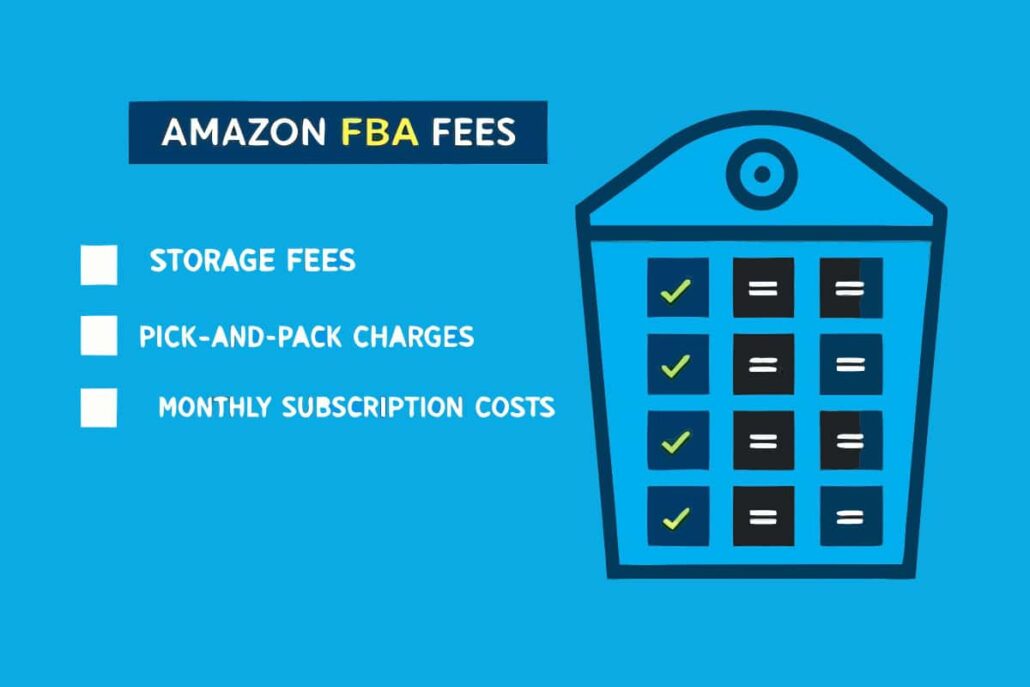
Amazon FBA (Fulfillment by Amazon) can transform your business by handling storage, packing, shipping, and customer service. But success depends on understanding the fee structure that determines your profit margins.
This comprehensive guide breaks down every Amazon FBA fee you’ll encounter, explains how they’re calculated, and provides strategies to minimize costs while maximizing your returns.
What Are Amazon FBA Fees?
Amazon FBA fees are charges that Amazon collects for storing, picking, packing, and shipping your products to customers. These fees also cover customer service, returns processing, and access to Amazon Prime’s vast customer base.
The fee structure includes several components:
- Fulfillment fees (picking, packing, shipping)
- Storage fees (monthly and long-term)
- Referral fees (Amazon’s commission)
- Additional service fees
Understanding each component helps you price products correctly and choose the most profitable items for your FBA business.
Amazon FBA Fulfillment Fees
Fulfillment fees represent the core cost of Amazon’s FBA service. These fees vary based on product size, weight, and category.
Size Tiers and Pricing
Amazon categorizes products into specific size tiers:
Small Standard Size
- Maximum dimensions: 15″ x 12″ x 0.75″
- Maximum weight: 16 oz
- Fee range: $3.22 – $4.00 per unit
Large Standard Size
- Maximum dimensions: 18″ x 14″ x 8″
- Maximum weight: 20 lbs
- Fee range: $4.75 – $7.32 per unit
Small Oversize
- Maximum dimensions: 60″ x 30″ x 8″
- Maximum weight: 70 lbs
- Fee range: $9.73 – $21.20 per unit
Medium Oversize
- Maximum dimensions: 108″ x 30″ x 8″
- Maximum weight: 150 lbs
- Fee range: $20.02 – $36.17 per unit
Large Oversize
- Maximum dimensions: 108″ x 30″ x 8″
- Maximum weight: Over 150 lbs
- Fee range: $89.98+ per unit
Dangerous Goods Fees
Products containing hazardous materials incur additional fees ranging from $0.45 to $2.40 per unit, depending on the classification level.
Amazon FBA Storage Fees
Storage fees depend on the volume of inventory you keep in Amazon’s fulfillment centers and the time of year.
Monthly Storage Fees
Standard-Size Products
- January-September: $0.87 per cubic foot
- October-December: $2.40 per cubic foot
Oversize Products
- January-September: $0.56 per cubic foot
- October-December: $1.40 per cubic foot
Long-Term Storage Fees
Amazon charges additional fees for inventory stored longer than 365 days:
- $6.90 per cubic foot or $0.15 per unit (whichever is greater)
These fees apply on the 15th of each month for eligible inventory.
Aged Inventory Surcharge
Products stored for 181-365 days face an aged inventory surcharge:
- $0.50 per cubic foot per month for standard-size
- $0.40 per cubic foot per month for oversize
Amazon Referral Fees
Referral fees are Amazon’s commission on each sale, calculated as a percentage of the total sale price (including shipping and gift wrap charges).
Category-Based Referral Rates
Common referral fee rates include:
- Electronics: 8%
- Clothing and Accessories: 17%
- Home and Kitchen: 15%
- Books: 15%
- Automotive: 12%
- Sports and Outdoors: 15%
Most categories have a minimum referral fee of $0.30 per item.
Variable Closing Fees
Media products (books, music, video, software) incur an additional $1.80 closing fee per item.
Additional Amazon FBA Fees
Return Processing Fees
When customers return items, Amazon charges return processing fees:
- $5.00 for orders under $10
- $10.00 for orders $10 and above
Disposal and Removal Fees
Disposal Fees
- Standard-size: $0.30 per unit
- Oversize: $0.40 per unit
Removal Fees
- Standard-size: $0.78 per unit
- Oversize: $1.39 per unit
Unplanned Service Fees
Amazon charges these fees when shipments don’t meet preparation requirements:
- Labeling: $0.55 per unit
- Bagging: $0.55 per unit
- Bubble wrap: $0.65 per unit
- Taping: $0.55 per unit
Strategies to Reduce Amazon FBA Fees
Optimize Product Dimensions
Small changes in packaging can move your product to a lower fee tier. Consider:
- Reducing packaging size
- Using lighter materials
- Redesigning product dimensions
Manage Inventory Levels
Avoid long-term storage fees by:
- Forecasting demand accurately
- Running promotions on slow-moving inventory
- Removing excess inventory before fee assessments
Choose Profitable Categories
Focus on categories with lower referral fees and higher profit margins. Research category-specific fees before adding new products.
Prep Products Correctly
Avoid unplanned service fees by:
- Following Amazon’s packaging guidelines
- Applying proper labels
- Using required protective materials
Calculating Your Amazon FBA Profitability
Revenue Calculation
Start with your selling price and subtract:
- Referral fees
- Fulfillment fees
- Storage fees (monthly allocation)
- Additional service fees
Cost of Goods Sold (COGS)
Include:
- Product cost
- Shipping to Amazon
- Packaging materials
- Labor costs
Profit Margin Formula
Profit = Revenue – (Amazon Fees + COGS + Other Expenses)
Use Amazon’s FBA Revenue Calculator to estimate profitability for specific products.
Fee Changes and Updates
Amazon regularly updates its fee structure. Stay informed by:
- Checking Amazon Seller Central announcements
- Reviewing fee schedules quarterly
- Subscribing to Amazon seller newsletters
- Monitoring industry news sources
Major fee changes typically take effect in February and August each year.
Comparing FBA to Alternative Fulfillment Methods
Fulfillment by Merchant (FBM)
Consider FBM when:
- Your products have high storage fees
- You have efficient fulfillment capabilities
- Margins are tight with FBA fees
Third-Party Logistics (3PL)
3PL services might offer savings for:
- High-volume sellers
- Oversize products
- Multi-channel fulfillment needs
Tools for Fee Management
Amazon Native Tools
- FBA Revenue Calculator
- Inventory Age Report
- Fee Preview Report
- Reimbursement Reports
Third-Party Solutions
Popular tools include:
- SellerApp
- Jungle Scout
- Helium 10
- ManageByStats
These platforms offer advanced analytics and fee optimization features.
Making Amazon FBA Fees Work for Your Business
Understanding Amazon FBA fees is crucial for building a profitable business. While fees represent a significant expense, they provide access to Amazon’s massive customer base and world-class fulfillment infrastructure.
Focus on product research, inventory management, and continuous optimization to maximize your returns. Regular fee analysis and strategic adjustments will help you maintain healthy profit margins while scaling your Amazon business.
Start by calculating fees for your current products, identify optimization opportunities, and implement changes systematically. Success with Amazon FBA comes from treating fees as an investment in growth rather than just another cost.

